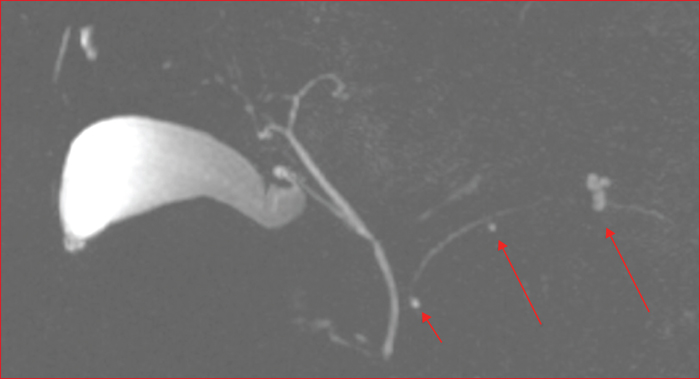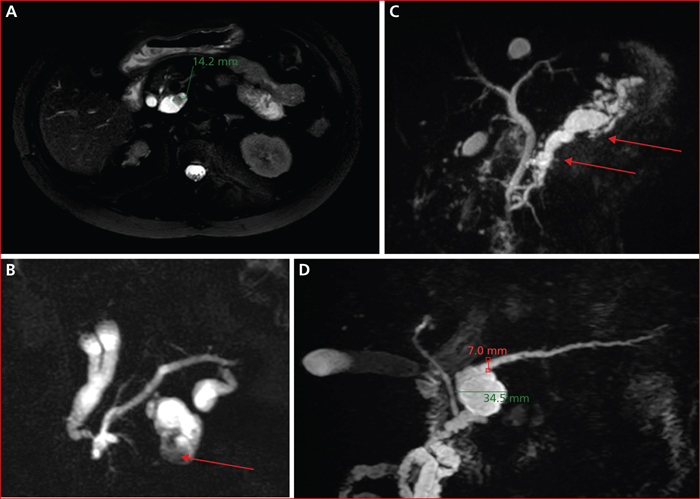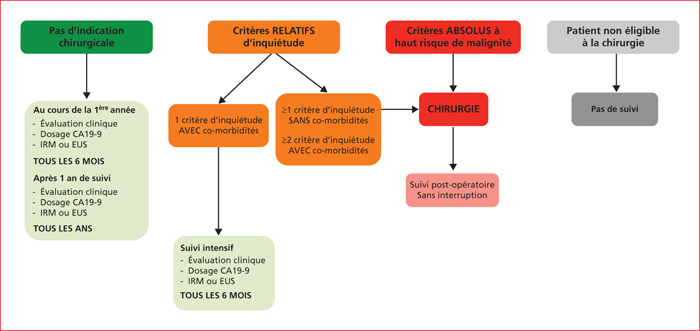Hépato-Gastro & Oncologie Digestive
MENUIntraductal papillary mucinous neoplasms Volume 27, issue 1, Janvier 2020
- Key words: IPMN, precancerous lesion, cystic lesion, endoscopic ultra sound, follow-up, pancreatic cancer
- DOI : 10.1684/hpg.2019.1900
- Page(s) : 63-72
- Published in: 2020
Intraductal papillary mucinous neoplasms of the pancreas (IPMN) are precancerous cystic lesions involving main or branch ducts. The discovery is mainly fortuitous, thanks to advances in conventional imaging performances. The prevalence is estimated < 10% in the general population more than 60 year old. A minority of patients will develop invasive lesions (< 4%), however 3 reasons justify a cautious follow-up: 1) high rate of mortality of pancreatic cancer, 2) the lack of tools to diagnose the dysplasia grade, 3) the absence of knowledge's regarding the risk factors of invasive lesions in order to select the population at risk. This follow-up is expensive (no study confirmed the cost effectiveness of the protocols) and imperfect (risk of interval cancer). However gastroenterologists have to combine the different types of imaging procedures to make an accurate diagnosis and to propose the adapted treatment and follow up. A surgical resection is recommended in case of criteria of high risk of malignancy and has to be discussed in case of worrisome features according to the age and co-morbidities of the patients.




